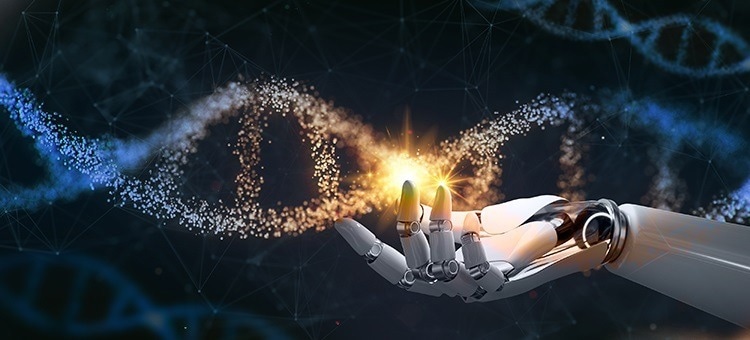Researchers at Chalmers University of Technology in Sweden have developed synthetic DNA that uses artificial intelligence to control the production of proteins in cells.

Image Credit: Unsplash & Pixabay
The technology could make it possible to develop and produce vaccines, drugs for serious diseases, and alternative food proteins much more quickly and affordably than they are currently.
All living organisms’ cells function in a way that is fundamentally based on how the genes are expressed. In simplest terms, the messenger RNA (mRNA) molecule receives instructions from the DNA’s genetic code about which proteins to produce and in what quantities. This process is known as transcription.
Controlling gene expression is a major area of research because it can, among other things, aid in the creation of protein-based medicines. A current illustration is the mRNA vaccine against Covid-19, which told the body’s cells to make the same protein that is on the coronavirus’s surface.
The immune system of the body could then develop antibodies to the virus. Likewise, by comprehending the genetic code that controls the production of particular proteins, it is possible to instruct the body’s immune system to eradicate cancer cells or other complex diseases.
The majority of today’s new medications are protein-based, but because it is challenging to regulate how the DNA is expressed, the methods used to make them are expensive and time-consuming.
To understand and manage how much of a protein is made from a particular DNA sequence, a research team at Chalmers led by Associate Professor of Systems Biology Aleksej Zelezniak made significant progress last year.
First it was about being able to fully ‘read’ the DNA molecule's instructions. Now we have succeeded in designing our own DNA that contains the exact instructions to control the quantity of a specific protein.”
Aleksej Zelezniak, Associate Professor, Department of Biology and Biological Engineering, Chalmers University of Technology
DNA molecules made-to-order
Similar to how AI creates faces that resemble real people, the new technique operates on the same principle. The AI is therefore able to produce entirely new but realistic faces by learning how a wide variety of faces appear. Then, it is simple to change the appearance of a face by, for instance, telling it to have a different hairstyle or to appear older.
On the other hand, programming a realistic face from scratch without the aid of artificial intelligence would have been much more challenging and time-consuming. Similarly, the AI used by the researchers has been taught the regulatory structure of DNA.
The AI then creates synthetic DNA that can easily have its regulatory information modified to point gene expression in the desired direction.
Simply put, the AI “prints” the correct DNA sequence after being instructed on how much of a gene is desired.
DNA is an incredibly long and complex molecule. It is thus experimentally extremely challenging to make changes to it by iteratively reading and changing it, then reading and changing it again. This way it takes years of research to find something that works. Instead, it is much more effective to let an AI learn the principles of navigating DNA. What otherwise takes years is now shortened to weeks or days.”
Jan Zrimec, Study First Author and Research Associate, National Institute of Biology
Efficient development of proteins
The yeast Saccharomyces cerevisiae, whose cells resemble those of mammals, is where the researchers developed their technique. The use of human cells is the next step. The researchers are hoping that their work will influence the creation of both new and existing drugs.
“Protein-based drugs for complex diseases or alternative sustainable food proteins can take many years and can be extremely expensive to develop. Some are so expensive that it is impossible to obtain a return on investment, making them economically nonviable. With our technology, it is possible to develop and manufacture proteins much more efficiently so that they can be marketed,” concluded Zelezniak.
Source:
Journal reference:
Zrimec, J., et al. (2022) Controlling gene expression with deep generative design of regulatory DNA. Nature Communications. doi.org/10.1038/s41467-022-32818-8